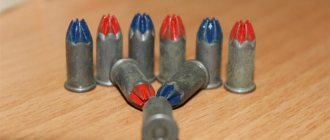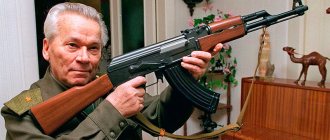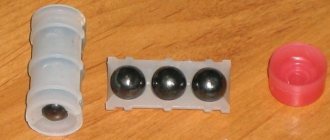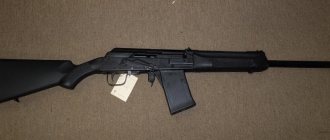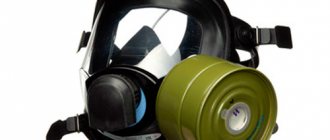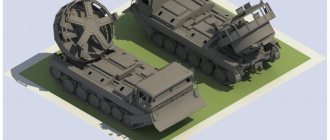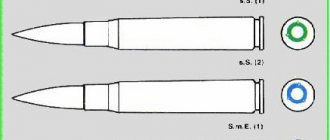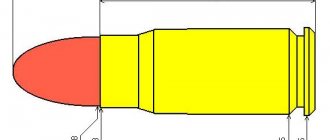- October 25, 2018
- Weapons and ammunition
- Human
In hunting, cartridges play an important role. Without them, killing the beast is not easy. Of course, you can use a bow, crossbow or edged weapon. But modern hunting almost always involves a shotgun or carbine. So it is necessary to use hunting cartridges. Their species diversity, purpose and labeling are discussed in the article.
Introductory information
Hunting always uses a large number of cartridges. They differ from each other in many respects. And first of all, it is necessary to mention their diversity. In general, there are several different classifications. Manufacturers have proposed division into only 6 main groups of ammunition:
- for smoothbore guns;
- for rifled weapons;
- blank ammunition;
- for traumatic weapons;
- used in sports shooting;
- pneumatic bullets.
Representatives of the first two groups are used in hunting. These will be the main focus. After all, the rest are either not suitable for hitting a hunting target at all, or can only cause minor damage, which is unlikely to be enough to kill a certain game.
What about smoothbore weapons?
This is the most popular option when hunting. Therefore, it is necessary to take a closer look at the types of hunting cartridges used for it. The main object of study will be 12 gauge products. This choice is due to its popularity among hunters.
Hunting cartridges in this case are classified based on the design features of the ammunition. There are three groups here:
- Shotguns. Additionally, they are divided into standard, reinforced and sports.
- Buckshot.
- Bullets.
In addition, the diameter of the gun barrel is also taken into account. Depending on it there are:
- Large-caliber cartridges. These are 12, 10, 8 and 4.
- Medium caliber cartridges. These are 16, 20 and 24.
- Small caliber cartridges. These are 28, 32, 410.
Today, 8 and 4 gauges are not used. The 10th is more or less common only in America. The 410 caliber has unique properties, which is why it is often not considered for hunting (although it is widely used here). The most popular today is 12 gauge hunting cartridges.
Classification of cartridges
As mentioned earlier, the bullet was not always part of the cartridge; in addition, there are a number of cartridges that do not contain a bullet:
- Signal.
- Single.
The purpose of signal cartridges can be understood from the name. Instead of a bullet, they use a special mixture that produces a bright fire when ignited. A shot is simulated using blank cartridges.
In addition to the above, cartridges can be classified into:
- Combat ones are exactly those that are imagined when the word cartridge is mentioned. That is, a device for hitting a target.
- Training cartridges in their shape, weight and appearance completely imitate combat cartridges and are intended for teaching the basics of shooting.
- Hunting cartridges differ in appearance from combat cartridges and instead of bullets, as a rule, they have a handful of metal balls - shot.
- Construction cartridges are designed to create powder gases, which, with their pressure, drive a special nail - a dowel - into the wall.
In addition, cartridges can be divided into:
- Unitary.
- Composite.
Unitary is the familiar one-piece cartridge that contains all of the above components.
The compound cartridge is primarily used in heavy artillery systems in which it is difficult for a person to load the gun with a unitary cartridge. To do this, the ammunition is supplied with a capsule separately and they are connected in the gun barrel.
Design specifics of ammunition for smooth-bore weapons
The cartridge contains the following elements:
- Sleeve. There are cardboard, plastic, wood-fiber and metal. They differ in their diameter.
- Primer-igniter.
- Projectile (bullet, buckshot or shot).
- Wads.
- Charge of gunpowder.
The principle of their operation is as follows: at the moment of firing, the firing pin of the weapon strikes the igniter primer. As a result, the powder charge is ignited. Under the influence of gases formed during the combustion process, the wads push the projectile out. And the natural result is that a shot is fired at the target.
Bottom line
As already noted, in the history of weapons there are options for using a bullet without a cartridge, and in the modern world - using a cartridge without a bullet. And yet, in the classic version, familiar to us all, the bullet is an integral part of the cartridge .
When a cartridge enters the chamber of a weapon, when the shooter presses the trigger, the primer is pierced, which ignites, igniting the powder charge of the cartridge, which, during combustion, releases a huge amount of gases, pushes the bullet out of the cartridge case, and it begins its movement along the barrel bore to the target , and the cartridge case remains in the weapon. Using a special mechanism, it is removed from the chamber, and a new cartridge takes its place. This is how the weapon, the cartridge and the bullet flying out of it work together.
MiscellaneousComment
How to choose ammunition for shotguns?
This must be done based on a large number of features. First of all, you should consider the parameters of the shot. For example, the radius of a circle. Also, when choosing hunting cartridges, you need to consider the following points:
- Type of gunpowder. It can be smoky or smokeless. In general, this does not significantly affect shooting. But due to gunpowder smoke, some discomfort may occur. In addition, it leaves quite a significant residue on the parts of the weapon used.
- Sleeve type. They are usually made from plastic, metal, cardboard and, much less frequently, wood fibers. When choosing, you need to take into account what weapon is used for hunting, as well as specific points. For example, metal ones are reliable and convenient, although they are expensive and get very hot.
- Fraction number. This must be based on worthwhile goals. That is, depending on what animal is being hunted. For example, a duck shot for 12 gauge should be from 2 to 11. But the best is from 5 to 7. 3 and 4 are more suitable for hunting small animals. If you plan to hunt large animals - deer or wild boars - then you should use buckshot or bullets.
- Price. This parameter is influenced by the popularity of the manufacturer, the materials used for manufacturing, the quality of the product, as well as its power.
Main menu
Share the news with your friends
In our good and rosy, nasty, dirty and sinful world, where total injustice and lawlessness reign, where everyone sleeps and sees how to kill each other, there is one magnificent bright thing that gives absolutely equal chances of survival to all people on the planet. This is a Kalashnikov assault rifle.
Precisely AK, because in the event of a serious mess, you most likely will not get any other weapons.
In the army, you won't get the beautiful, ergonomic M4A1 assault carbine in full body kit that you saw in The Secret Soldiers of Benghazi. You will not see in your hands the ORSIS T-5000 rifle, from which in your fantasies you shoot down tall targets from 1.5 kilometers away. You won't even get the coveted Glock.
If you don't have your own personal arsenal of weapons, all you get is the good old AKM. Someone will be very lucky and get an AK-74.
But the machine gun itself will not be able to shoot. In order for him to begin to instill horror and awe, to sow equality and justice everywhere, he needs cartridges. It is thanks to them that this mechanism, calibrated like a Swiss watch, is set in motion. It is these seemingly simple things that carry your point of view into the distance.
We'll talk about them today. Understanding the type of cartridge is very important knowledge, so that you don’t end up with a situation like in the movies: “This is the wrong cartridge, this one doesn’t fit either... and this is a candle for hemorrhoids.”
WHAT IS A CARTRIDGE.
The cartridge consists of 4 main parts - a cartridge case, a bullet, a primer and a propellant charge (gunpowder). Without going into too much detail, let’s look at the digital designation of the cartridge “7.62x39”. It means the following:
7.62 is the caliber of the cartridge (that is, by and large, the diameter of its bullet);
39 is the length of the sleeve.
The choice of these parameters is determined by the fact that there are many other bullets with a diameter of 7.62 mm in the world - 7.62x25 (TT pistol, PPSh), 7.62x51 (NATO rifle cartridge), 7.62x54 (domestic rifle cartridge), 7.62x63 (another NATO rifle cartridge). And so that you don’t get confused about what to look for, write down the caliber and length of the cartridge case.
But if you get cartridges that are not made of zinc (on the lid of which it is written what kind of cartridges are inside), the type of cartridge is determined by the color marking of the bullet (less often, by the rim of the sealant varnish and by the stamps on the bottom of the cartridge case). It is also important to know what the cartridge for your weapon looks like.
Zinc cover with 7.62x54 LPS cartridges. Most markings are needed more for workers in the finished goods warehouse at the plant and for various reporting documentation. All the “experienced PC user” needs to know on this cover is the type of cartridge, the type of bullet and the number of pieces in the zinc.
ABOUT CARTRIDGE MARKING
The color marking for all calibers in the Russian Federation is generally the same. Therefore, if you see a 5.45x39 and 12.7x108 cartridge with a black bullet nose, know that they are both armor-piercing.
Let's take the 7.62x39 cartridge as an example. The cartridge was adopted in the form in which it is now, back in 1949. Even though they write everywhere “7.62x39 arr. 1943." In 1943, the length of its sleeve was 41 mm.
It is still used today for AKM, AKS, AK-103 assault rifles, SKS carbine and their “civilian” analogues. Most bullets in this cartridge travel at a muzzle velocity of 700 m/s +/- depending on the type of ammunition in the cartridge.
Like any cartridge, it has its pros and cons.
The disadvantages include its greater weight compared to 5.45x39, lower muzzle velocity along with its greater weight, which ultimately makes making adjustments when shooting a little more difficult than with the same 5.45x39.
But at the same time, the caliber has significant advantages, such as a wide range of different types of bullets, which were realized based on the sufficient dimensions of the 7.62 bullet.
For example, a silent firing complex for 7.62x39 with a subsonic 57-N-231U bullet turned out to be much more successful than the same complex for 5.45x39 with a 7U1 bullet. And this is one of the reasons why this caliber is still in service in, so to speak, “special units”.
During its operation, several types of bullets were developed for it. Let's take a closer look (scroll through the photo below).
Cartridge with a regular bullet - PS (57-N-231). In the photo - 1st, 2nd and 3rd. Full metal jacket bullet, steel core in a lead jacket. In the civilian version - a bullet without a core, in its place is lead. It says "lead core". Many people argue that military ammunition with a regular bullet pierces body armor because of the steel core. The steel core is made there to reduce the cost of production, because steel is much cheaper than lead. Only the heat-strengthened core (TUS) penetrates body armor. It is not used in a regular cartridge. The cartridge comes either with a red sealant rim (varnish between the cartridge case and the bullet), or without it at all. The most common cartridge in the Russian Federation (on par with 5.45x39 with the same type of bullet). In caliber 5.45x39 its analogue is the 7N6 cartridge (the same one about which the stupid myth about bullets with a shifted center of gravity originated) and 7N6M. For 7.62x54 these are LPS bullets. They come with or without silver markings on the top. The rim of the bullet is painted with red varnish.
Without a PBS installed on the barrel, when firing, the automatic system does not work or works on the principle of “no more than yes.” You have to manually load the weapon after firing.
PBS-1 in section. Please note that there is no rubber seal (at the junction of the narrow and wide parts of the product). It locks some of the gases in the barrel when fired. The remaining gases are inhibited and cooled in the chambers.
The ballistics of this bullet are different from the usual PS bullet - the trajectory decreases very quickly, when fired, the bullet moves to the right due to the fact that the pitch of the rifling of the AKM barrel was designed for different speeds and bullet weight. Therefore, along with the PBS, a special sighting bar with a bunch of additional adjustments was included. If you load a regular cartridge with this sighting bar, you will not hit where you were aiming.
When firing conventional bullets with PBS, only the sound of the shot is muffled. A supersonic bullet creates a nice “pop” that sounds like the crack of a whip.
In caliber 5.45x39 it has an analogue with the designation 7U1. But due to the low performance characteristics of this cartridge, it has not been produced in the Russian Federation for a long time. Sometimes the remains of these cartridges are found in the warehouses of military units. According to unconfirmed reports, these cartridges are still produced at the Lugansk Cartridge Plant.
The bullet's dimensions are very similar to the tracer bullet of this cartridge. According to some reports, this cartridge has not become widespread due to the destabilization of bullets when passing through a rubber seal.
This type was not produced for 7.62x54 due to the inappropriateness of such cartridges for this caliber.
For the same purposes, a whole “weapon + cartridge” complex was developed. This is the “Vintorez”, AS “VAL”, SR-3M and VSK-94, known to everyone from games and movies. The heavy subsonic (almost 17 grams) bullet, due to its mass and armor-piercing core, has better armor-piercing properties than US bullets for 5.45 and 7.62.
9x39 bullets have the following markings: red rim on SP-5, blue nose on SPP (sniper with increased penetration) and black noses on SP-6, BP and PAB-9.
However, the “amazing performance characteristics of Vintorez” are greatly exaggerated in different programs. According to the experience of familiar snipers serving with him, the maximum range of EFFECTIVE fire is 150-200 m.
Let's return to our 7.62x39
Cartridge with an armor-piercing bullet. In the photo - 8th. Sometimes found in the army. Ballistics are the same as a cartridge with a conventional bullet. The difference is greater armor penetration due to the special shape of the core and the material of its manufacture. To the question “why then doesn’t everyone have armor-piercing cartridges?!!!” I answer - because they are more expensive and more difficult to produce. From the state’s point of view, this is the most comprehensive answer. The nose of the bullet is marked black. In caliber 5.45x39 its equivalent is the 7n24 cartridge. It is found mainly in all your “special forces”. The 7.62x54 also has an armor-piercing cartridge, but it is not very widespread.
There are also 5.45x39 cartridges with increased penetration 7N10, which are now standard cartridges for the AK-74 line. Ballistics are similar to the 7N6 cartridge. The rim of the sealant varnish is painted purple. There is also a cartridge with increased armor-piercing 7N24, but I personally have never seen it. The nose of the bullet is not marked, but the rim of the case seal and primer is black. Sometimes the security forces of the Ministry of Internal Affairs/FSB can find a PRS cartridge (for calibers 5.45x39 and 9x18) - with reduced ricocheting ability. Created for shooting in a confined space. There is only lead inside the bullet and when it hits, it crumples without making a ricochet. They have a blue sealant rim and a PRS stamp on the bottom of the case. Automatic PRS 5.45x39 - this is the same all-metal hunting 5.45x39. No more, no less. In terms of ballistics, it is almost similar to the standard PS.
5.45x39 increased penetration 7n10. It is as widespread as 7n6. The ballistics are the same.
There is also such ammunition for 9x18. They can also be distinguished by the characteristic shape of the bullet, which contributes to its destruction when it hits an obstacle. Inside, along the longitudinal axis of the bullet, there is a hole in the lead up to the innermost side of the nose of the shell.
In the 12.7x108 version, the markings are exactly the same. The only exception is the MDZ (instantaneous incendiary) bullet. The visible part of the bullet is completely red. The barrel of the 12.7 and 14.5 machine guns gets clogged up simply shamelessly...
... and also if by some miracle the cartridge becomes misaligned when fed into the chamber. and the bullet hits its breech at high speed, then, most likely, your machine gun will end. The fighting strength in the bullet is enough to turn the receiver around.
OTHER CARTRIDGES
There are also cartridges that are used exclusively for technical purposes in the production of weapons - a cartridge with a reinforced charge (UZ - the entire bullet is covered with black varnish), a high-pressure cartridge (HP - the entire bullet or the nose of the bullet is yellow). These are only used in factories. Seeing them is extremely rare.
And “exemplary cartridge”. The nose of the bullet is painted white. In terms of performance characteristics, the model cartridge is similar to a cartridge with a conventional bullet, but is manufactured with increased accuracy. Used to check the ballistic characteristics of stored ammunition.
Sometimes they give out packs for shooting simply because you need to shoot. In general, they are no different from regular PS bullets for all calibers. I've seen these at 5.45, at 7.62, at 9x18 (very often).
This is military ammunition. But you may also get your hands on ammunition for the civilian market. This is also something that does not fit under various conventions, etc. and therefore is not in service.
CIVIL AMMUNITION
These include the following ammunition:
Semi-jacketed ammunition. They do not have any markings. The nose of the bullet is lead and rounded. Armor penetration is weak, but has a good stopping effect due to the fact that when hit, the nose flattens and transfers the energy of the bullet over a larger area. For example, 7.62x39 SP.
Well, lately bullets with a core made of lard (or pig or lead) have been gaining popularity for shooting at Islamic terrorists so that they do not go to heaven. Just a joke, of course.
Shotgun cartridges have markings on the shell. It indicates what type of projectile is inside and its main characteristics - bullet, buckshot, confetti or shot.
In general, hundreds of different cartridges were invented. And describing each of them is not enough for any article. Therefore, we have described those species that you are most likely to see in our country.
Special cartridges for special weapons that the average citizen will never get his hands on. For example, the SP-3 (left) and SP-4 cartridges, which are used in silent weapons. Their feature is the locking of gases inside the cartridge case after a shot using a piston that pushes the bullet.
But no matter how cool your machine gun is and no matter how much ammunition you have for it, it will not be effective if you do not know how to use it all, think with your head and shoot accurately.
Therefore, train wisely and live by your wits.
Team NVP73.
Related publications:
Kharkov Mayor Kernes, who was sick with coronavirus, has died
The EU demanded multi-billion dollar compensation from Russia for import substitution
New models of small arms were tested by cadets of the sniper school of the Eastern Military District
Why is it necessary to understand calibers and numbers?
Many novice hunters, unfortunately, do not always understand why this is needed. But everything is explained very simply. The fact is that if you use large-caliber ammunition when hunting birds or small animals, this will result in a greatly spoiled appearance of the prey.
This is especially true in cases where hares and other fur-bearing animals are hunted. That is, in cases where it is necessary to keep the skins in good condition. The correct shot for duck will preserve feathers in good quality, which can then be used.
One should take into account the fact, which is not obvious to many, that the dimension acts as an indicator of the energy of the cartridge, and not the size of the projectile used. What does this lead to in practice? Let's say that a large-caliber bullet hits the body of a large animal. In this case, it will begin to rotate strongly. This will cause severe damage. This situation prevents a through flight, in which a wounded animal can escape from the hunter.
Understanding what caliber and number is needed is also important for reasons of economy. After all, more powerful cartridges with a large caliber are more expensive compared to small ammunition.
In addition, the issue of weight is also relevant here. Both the projectile individually and the weapon as a whole. It is worth considering that a small caliber has better flatness and allows you to hit the target more accurately. Even in adverse weather conditions.
Specifics of smoothbore weapons
Cartridge casings can be metal, plastic, paper or wood fiber. Filled with shot, buckshot and bullets. Equipped with gunpowder. After the caliber, hunting cartridges are divided according to the length of the cartridge cases. It can be 67 mm, 70 mm, 76 mm, 89 mm. True, this is only relevant for fractions. Cartridges with buckshot and 89 mm bullets are not produced.
The shot ranges from No. 00 to No. 12, which corresponds to from 1.5 mm to 5 mm. Anything more than this is already buckshot. Shot is used when hunting small game - hares or ducks. Buckshot is suitable for not very large animals. As a rule, this is a doe or a wolf. Although there are separate solutions designed for hunting bears and wild boars. Well, bullets are exclusively for the largest representatives of the fauna.
Classification of bullets
With such a variety of cartridge types, it can be assumed that bullets can also be divided into the following types:
- A regular bullet has a classic streamlined shape.
- Armor-piercing bullet - there is a steel core inside that allows you to penetrate armor.
- Tracer bullet - has a special mixture on the bottom, which is ignited when fired and burns in flight, showing the shooter the direction in which it flew, so that he can adjust the sight.
- Explosive bullet - contains an explosive substance that explodes when it collides with an obstacle.
- An incendiary bullet is similar to a tracer bullet, only there is much more of a special incendiary substance on it, which makes it possible to set fire to various objects, such as wooden buildings, fuel tanks, and so on.
- Various combinations of the above, for example, armor-piercing incendiary, etc.
- Traumatic bullet - made in the form of a rubber ball and designed to cause non-lethal damage for self-defense, allowing you to stop the attacker.
Bullet
Marking
It means the presence of an inscription that gives a brief description of the cartridges. To see all the required information, you need to look, for example, at 12 gauge cartridges or their packaging. But the wrapper may get lost. And you will have to be content with the information posted on the sleeve. Usually it indicates the purpose of the cartridge, the type of gunpowder used in its creation, length, shot number, caliber. If we talk about those intended for sale in Russia, then there may be additional drawings. Design is regulated by GOST 15.009.
Do you need a container?
When talking about the composition of the regenerative cartridge, it is worth talking about the container. This is a special plastic container that is inserted into the cartridge case immediately after the gunpowder and filled with shot or buckshot.
Its use allows you to increase the combat range, as well as accuracy - the spread of the shot will decrease and all of it will hit a relatively small target. But if a hunter needs a large spread (for example, when shooting with small shot at a flock of woodcocks at a short distance), then it is better to abandon the container. In this case, the shot range will decrease, but you can shoot down several small birds with one cartridge.
Therefore, a hunter, when going hunting, must choose the optimal composition of the cartridge himself in order to increase his chances of success.
Labeling difficulties
Unfortunately, it is impossible to say that there is a universal classification of hunting cartridges that is used always and everywhere. For example, in the Russian Federation there is a 45 caliber. In the US it becomes 0.45. Whereas the UK generally designates it as 0.450.
Shotgun cartridges are designated by a specific caliber, which is equal to the number of bullets cast from one English pound of lead that can be loaded into the weapon. Thus, it is inversely proportional to the numerical value. That is, the largest is 4, then 8, 10, 12, 16, 20 and so on.
For rifled weapons, the caliber is determined by the distance between two different riflings. As a rule, it is equal to the diameter of the bullet.
How to get ammunition?
Ammunition can be factory-made or home-made. In the first case, time is saved, a stable fight is practically guaranteed, and you can protect yourself from various failures when using semi-automatic guns. Loading 12-gauge cartridges with your own hands allows, with the proper skills, to optimize the effectiveness of firearms for specific needs. Although this is usually done by commercial hunters in relation to small calibers. The great advantage of such ammunition is that the person himself decides what characteristics the cartridge will have. After all, its parameters are set with your own hands.
Yes, to be honest, this approach turns out to be much cheaper in terms of money. But equipping semi-automatic weapons with them is a bad idea. However, if you have the desire and opportunity to take a risk, then you can try.
The equipment for 12 gauge cartridges is as follows:
- You must first take the sleeve and install the primer in it.
- Then an incendiary powder mixture is poured in.
- The wad is being laid.
- Shot/buckshot is filled in or a bullet is placed.
- An upper wad is installed, which will prevent shells from spilling out.
This is, in general terms, what this process looks like.
About the choice
It is advisable to use exactly those cartridges recommended by the manufacturer for a particular weapon. This is due to the fact that guns from different companies, but of the same caliber, often have discrepancies in diameter. And this difference in some cases can reach 1 mm! Therefore, to get a good fight and achieve the final result, it is necessary to use suitable bullets, buckshot and shotgun cartridges.
If you plan to fire over a long distance, it is advisable to pay attention to Magnum-type cartridges. They are distinguished by high power and significant bullet ejection energy. Due to this, they have increased lethality. This makes the cartridges suitable ammunition not only for hunting at long distances, but also allows you to kill large animals. When choosing manufacturing plants, we can advise you to pay attention to domestic companies. They supply quality products at a very reasonable price. In addition, given that domestic guns, such as the legends IZH-18, IZH-27 and IZH-43, are very popular in our country, you can select cartridges that are suitable for them.
